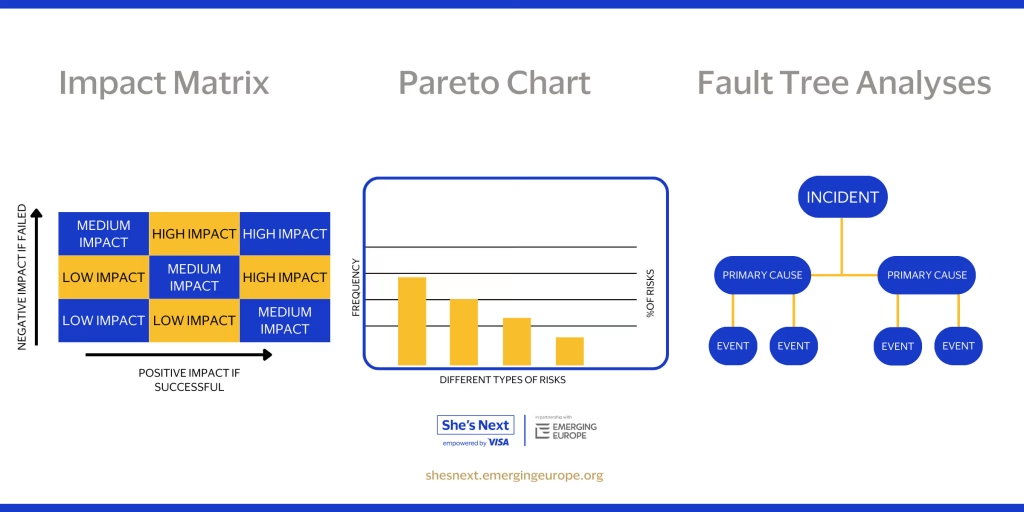
Strategies to help you embrace business risk
One of the most important things to remember when it comes to assessing and mitigating business risk is that there are a variety of different methods to use.
Mitigating business risk is an essential skill that all entrepreneurs should be familiar with. It will help them reduce or neutralise threats that may harm their businesses. However, it is important to know that mitigating risk is not free: it will cost you your time, but if done correctly it will save you from any number of extra time and financial costs spent on fixing problems.
Analyse and prioritise business risks
Risk analysis is a way of mitigating and assessing business risks that focuses on quality rather than quantity. To perform a risk analysis, you need to identify current risks and see which is your top priority, asses the risk, develop a relevant response and finally produce countermeasures for the future.
Some tools that will help you analyse and prioritise business risks include:
Pareto chart – A way to identify business risks based on occurring events.
Fault tree analyses – A way to find the potential outcomes of a problem using different branching paths.
Impact matrix – A way to rank different risks based on the damage they may cause and the likelihood of them happening.

Control business risks
How to control the business risk itself is an important step when it comes to mitigation. A great way to do this is by using a risk audit, essentially an in depth look at your business to see what could go wrong.
The carry out a business risk audit, review the way you responded to previous risks and what methods or tools you used, then review its effectiveness and see if there are any faults in your risk management that need to be addressed.
Another simple method to control risk is a risk action plan. This determines how you will react to business risks by organising them into four different groups. These groups are:
Risk avoidance – Eliminating all hazards and ways for this threat to happen.
Risk transfer – You pass responsibility for the risk onto a third party, like an insurance policy.
Risk mitigation – Lower the chance of risk but eliminating it entirely.
Risk acceptance – You accept the risk and deal with the consequences since there is nothing you can do.
In the grand tapestry of business, embracing risk is not a path to tread lightly. It’s a journey that mandates constant vigilance, assessment, and strategy. The courage to confront risks, the wisdom to navigate them, and the foresight to turn them into opportunities – these attributes pave the way for a successful and resilient entrepreneurial venture.
On the way to embracing business risk we suggest reading our article on Identifying Potential Risks for Entrepreneurs.
New Free Courses — Made for Ambitious Women Entrepreneurs!
It’s time to grow smarter, adapt faster, and take your business global.
Explore two powerful courses available exclusively to She’s Next members:
The Reinvention Masterclass for Start-up Founders
Beyond Borders: Building for Global Success
Enroll today — it’s free!






Responses